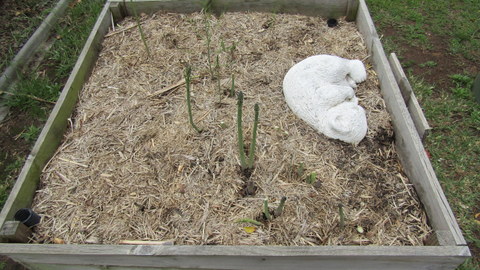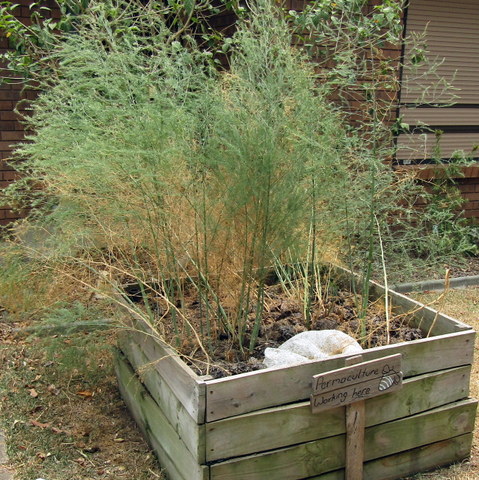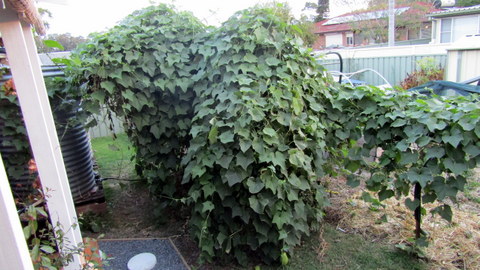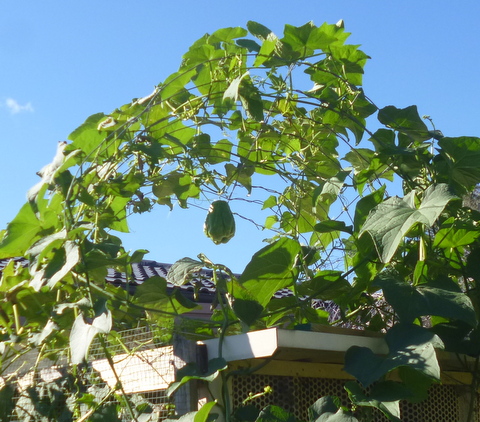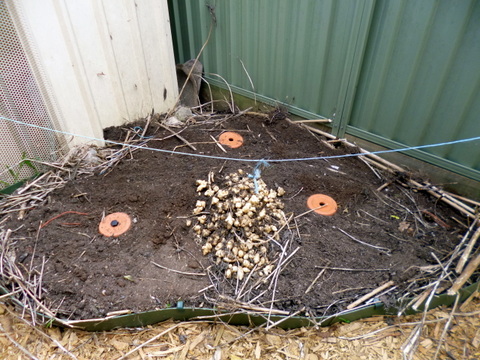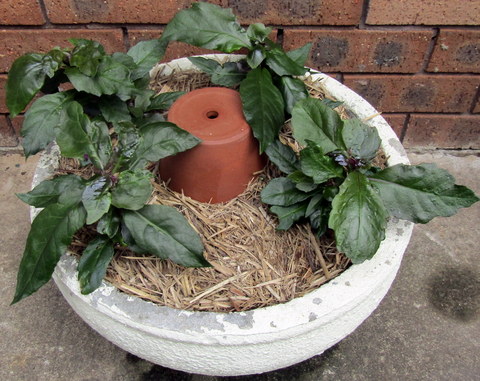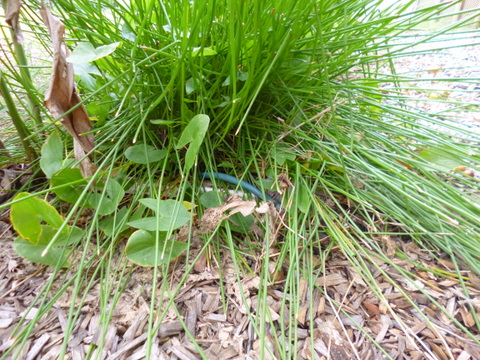The difference between annual and perennial Vegetables is a fairly simple one, annual vegetables complete their lifecycle (seed sown, plants grow, flower and then seed) in one year. Perennial vegetables complete their lifecycle in more than two years. In between there are vegetables which complete their lifecycles in two years, referred to as biennials. There are quite a lot of biennial vegetables such as beetroot, carrot, kale and onions that are grown as annuals, being harvested before they can complete their lifecycles.
There are a number of advantages that perennial vegetables have –
- Once they are in and productive, they can remain that way for many years and don’t need replanting annually.
- They are hardy and look after themselves, requiring less water and fertilising than many annual vegetables.
- They tend to be more resistant to pests and diseases that cause problems for annual crops.
- They can extend the harvest season – around here autumn can be a reduced produce time when the summer stuff has died off but the winter veg is not yet producing and Jerusalem artichokes and chokos are great contributors to our diet.
- They work well with no-till systems, you don’t need to dig em up and replant them every year.
- Some like rhubarb and walking onions do well in full shade.
Taking into account the above, why would you grow anything else? Well they do have disadvantages, some, like asparagus, can take years to establish before you get a crop. Others, like Jerusalem artichoke, can take over if you don’t watch them and some of the perennial greens can become very strongly flavoured over time. The reality is that we enjoy our annual veg, but growing perennial vegetables complements our harvest of annuals, increasing the variety of foods we grow.
Arrowroot (Canna indica)
I originally placed some donated arrowroot them at the south end of our water garden where excess water drains out and while they grow fairly well there, the bananas are encroaching on their space these days. I harvested some of these roots previously and inadvertently put them down on the northern (asparagus) wicking bed in the front yard. It appears they like this area and have competed rather effectively with the asparagus. Some time ago I decided to try them out as food and harvested and peeled the roots and tried them boiled and baked. I was underwhelmed by their flavour. They would be OK if that was all there was to eat. I also extracted the starch from the tubers for use as a thickener in food, and it works well.
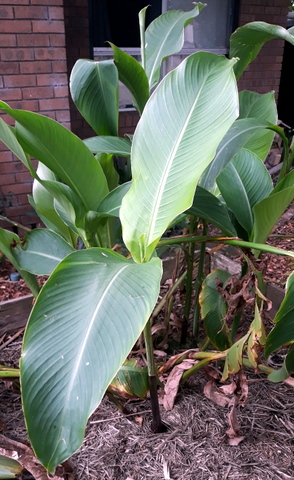
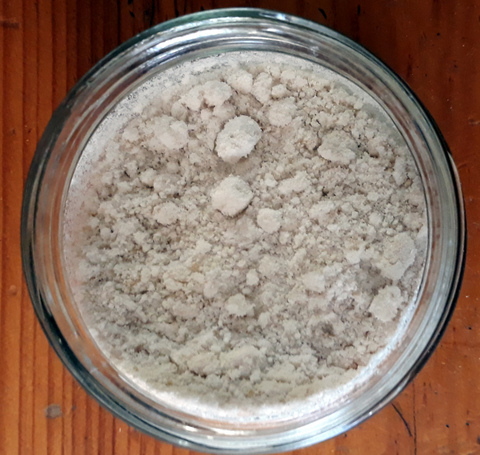
Homemade arrowroot starch thickener
Asparagus (Asparagus officinalis)
We have been growing asparagus in our front yard in a wicking bed for over ten years. It was so successful that we added a second one slightly north of the first one, but this has not been as successful because the mulberry tree has gradually encroached on it, reducing the amount of light it gets and some accidental arrowroot took over….. I add a bit of soil and mulch each year and not much else, the wicking bed ensures they gets plenty of water. As the spears come up in early spring, I harvest them and then after a couple of months of regular production I let them grow up into fronds. They will then sit there, sending up the odd spear until winter hits and they die back and I cut them off, ready for the process to start again in early spring.
Early spring and the asparagus spears are making their way to the surface
After harvesting is complete, they grow up and return energy to the roots
Broad Leaf Arrowhead (Sagittaria latifolia)
Also known as ‘Duck Potato’, Broad Leaf Arrowhead is a north American food plant which grows in water and produces an edible tuber that can look disconcertingly like an eyeball. It is quite productive but can be invasive so it needs to be isolated from the natural environment. I got hold of some when buying water chestnuts by mail and bought some arrowhead at the same time. I planted them at the same time and in the same manner as the water chestnuts (see below). We have also eaten them cut up in a stir fry like water chestnuts but find the water chestnuts to have a better texture. They also die back in winter, but sprout more quickly than the water chestnuts in spring.
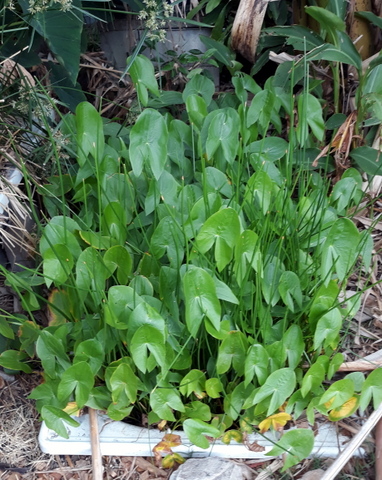
Arrowhead corm on the left
Choko (Sechium edule)
The choko is the mascot (for want of a better word) of our website and we have been growing them for over 25 years. We primarily grow it over an old orange tree (now dubbed the choko tree) in our back yard. We have also grown it over the western wall of the chook retirement village to provide shade as well as chokoes. They grow up over the tree and onto the roof of the garage, and in a wet year they can go so far as to obstruct the solar panels and have to be pruned. They produce chokoes in autumn then die back in winter, providing lots of organic matter for composting system. They are easy to grow and you can start with a single sprouting choko. The young leaves and tendrils are edible and go well in a stir fry, although the older leaves are a bit tough to be palatable. The roots are also edible and have a water chestnut-like texture (At least that’s what they seem like to me) We find that while the fruit is edible at almost any size, when harvest small – 25mm to 30mm long –and stir fried, they taste best, with a nutty flavour and crunchy texture.
The choko tree
Choko - Over the Chook Shed
Dandelion (Taraxacum officinale)
We don’t grow dandelion in the sense that we cultivate it, but we do allow it to grow throughout the back yard and eat it ourselves as well as feeding it to the chooks. For the most part we just eat the leaves, generally in a soy sauce based stir fry with other leaf crops, the salt in the soy sauce reduces the bitterness. The roots are edible as well but we have yet to do anything with them.
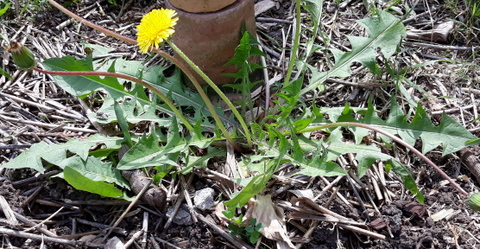
Jerusalem artichoke (Helianthus tuberosus)
This is another vegetable that is ridiculously easy to grow and is hugely productive, although you do need to keep an eye on it because it can become invasive. Many years ago I bought some tubers from the local supermarket in autumn, then kept them in the fridge and planted them out the next spring. Being aware that they can take over, I planted them in a triangular bed next to the northern fence and at the side of the worm shed. To make watering easier I installed three ollas, also in a triangular pattern. I cover the bed with some mulch from the banana trees and trimmings from other plants once they have died back. They have been there for many years and are still productive, but recently they have started mounting an expeditionary force towards the wood pile. They die back in autumn and we harvest and use them from then to early spring when they start to resprout. They are great roasted or in soups, just be aware they are fairly flatulogenic.
Ollas and partial harvest
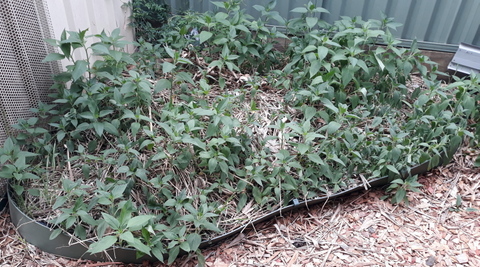
The main bed
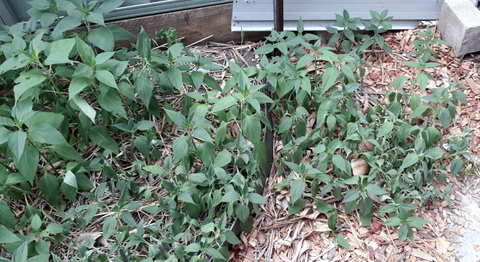
Making a break for it!
Okinawa Spinach (Gynura crepioides)
I was given some Okinawa spinach cuttings by one of the ladies at Permaculture Sydney West and I placed the cuttings in water for a few days so they could grow roots. Okinawa spinach is tolerant of heat and shade, but needs regular watering, is frost tender and if it gets away it can also become invasive. We decided to circumvent any of these potential problems by growing it in a large pot with a central olla, near the front brick wall of the house. It grows well and provides the occasional harvest, while being largely unaffected by the cold and/or dry weather we can experience here. It slows down but does not die back in winter due to the warmer microclimate being close to the thermal mass of the house.
Rhubarb (Rheum rhabarbarum)
We grow rhubarb in the front yard in a bed that was originally designed to be a shallow wicking bed, but it didn’t really work like that and was converted to a conventional raised bed. About three years ago I decided to convert it to a hugelkulture bed, pulling the rhubarb and all the soil out, placing in a whole stack of tree trimmings and then refilling it with soil. I cut the rhubarb back pretty savagely and replanted it and it has since continued to thrive.
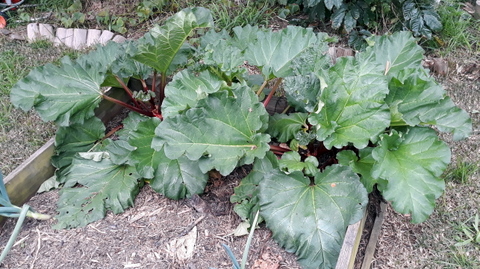
Sweet potato (Ipomoea batatas)
Sweet potatoes come in various hues, but from experience I have found that we only like the orange ones, so that is what we grow. While I have tried growing sweet potato in 20 litre buckets, they seem to do best straight in the ground. I originally grew them just by planting out commercial tubers but about 5 years ago I let a tuber grow slips (sprouts) cut them off and placed them in water to grow roots, then planted them out. It worked very well. We grow them in the front yard, in the LUFFA (Longitudinal understory food forest area) where the vines climb around the other trees and shrubs. They also die back in winter somewhat and then come back up in spring. They seem to taste best if they are harvested and then cured for a week or two in a warm dry place. We use them in curries, soups, cut up and fried as chips or just as a steamed vegetable. The leaves are also edible and are included in some of the recipes using greens that we cook.
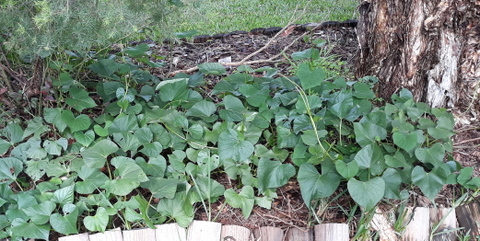
Taro (Colocasia esculenta)
We do grow taro in the constructed wetland in the back yard and, along with some of the other perennials, they die back partially in winter, but not completely – they always retain some leaves which I think is due to the warmer microclimate near the back of the house. While the root is edible, we do not eat it because it is part of our greywater treatment system and so not suitable for consumption.
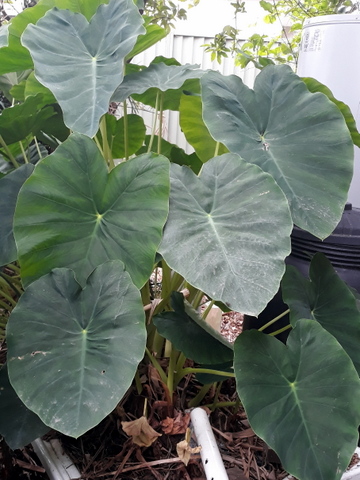
Water chestnut (Eleocharis dulcis)
Having enjoyed the delights of water chestnuts in Chinese restaurants and later used the tinned ones in our own home made Chinese food, I wanted to try growing them. Initially I tried in plastic pots sunk in a large concrete pot shaped like a half barrel filled with water, but for whatever reason they were never happy and certainly not productive. I decided to try a different tack and got hold of an old metal bath, sunk it in the ground and then put gravel in the bottom. I filled it with water then got hold of some 200mm plastic pots and cut 6mm holes in the side with a small wad punch. I filled them with potting mix, planted the tubers about half way down the pot, filled them up and put a layer of gravel on top to keep everything in place and sunk them into the filled bathtub. They have been growing there ever since. The die down in autumn and I harvest and use them until they start to sprout back up again the following spring. The water chestnut plant is easily distinguishable from the Broadleaf Arrowhead by their thin reedy leaf as opposed to the large arrow shaped leaf of the arrowhead.
Water chestnut on the right
Try Before You buy
Growing perennial vegetables has worked out well for us and I would recommend that anyone interested should give them a go. I have found when considering a new vegetable to grow, and this is especially applicable to perennial vegetables, get hold of some and cook them up for yourself or your family. This can save lots of frustration in the long run from spending all the time and effort growing them, only to have them rejected by the family because they don’t like the taste or texture. Good luck!



